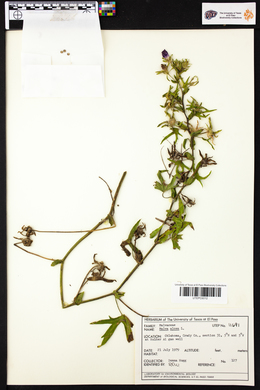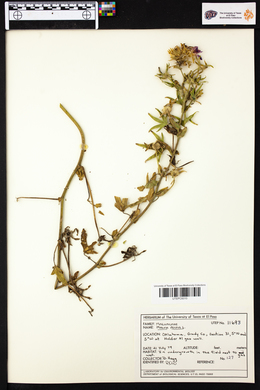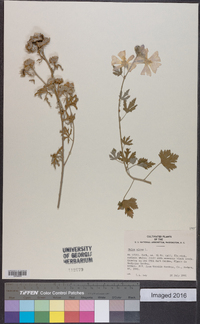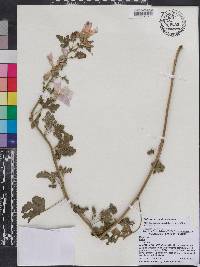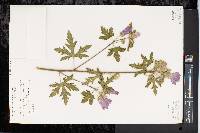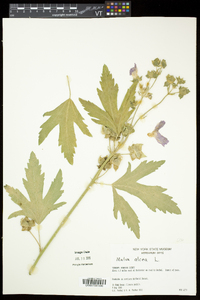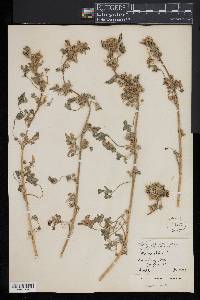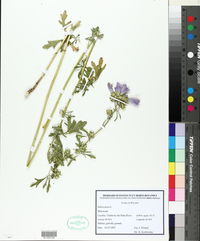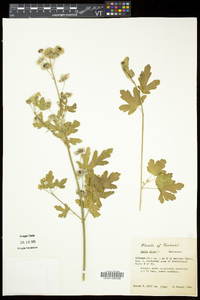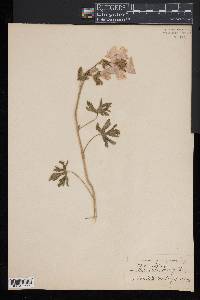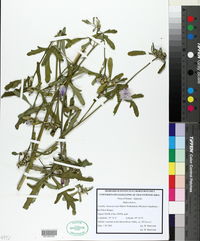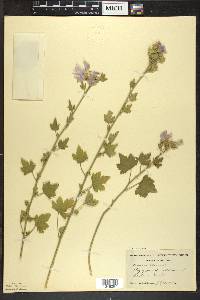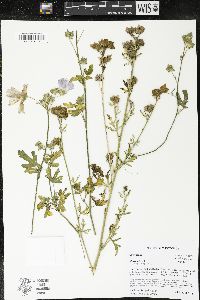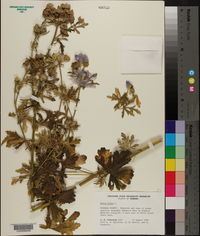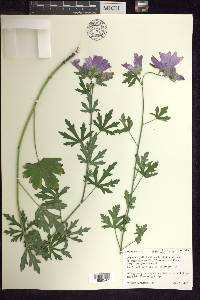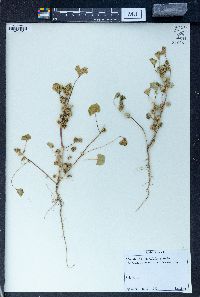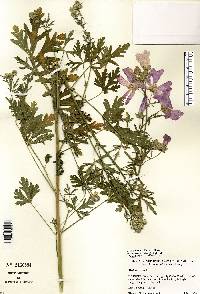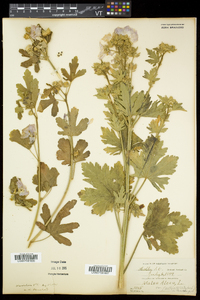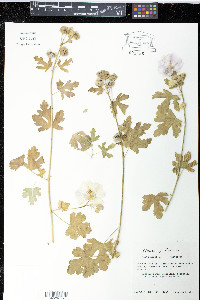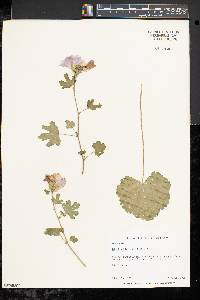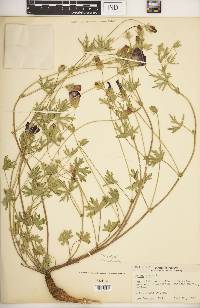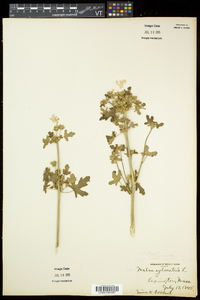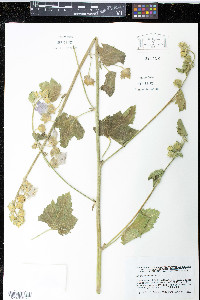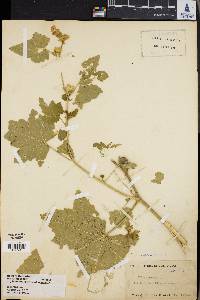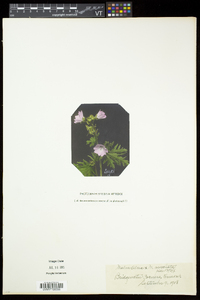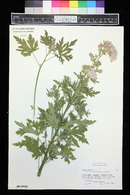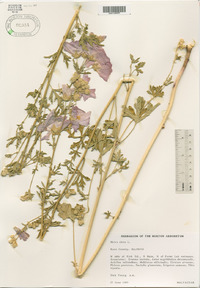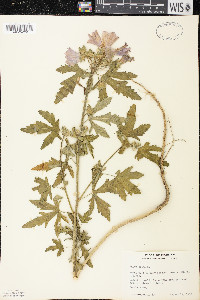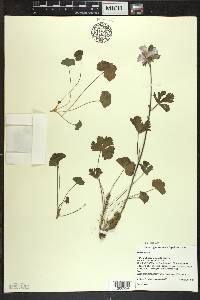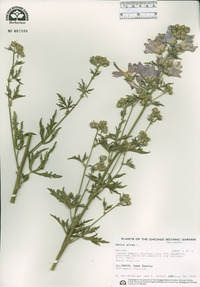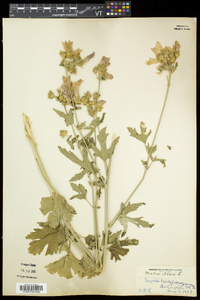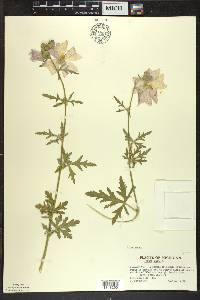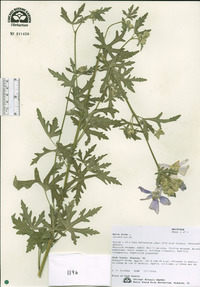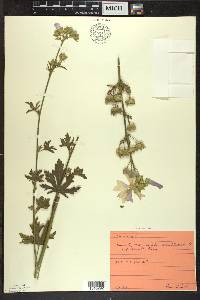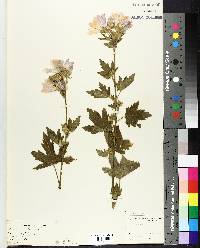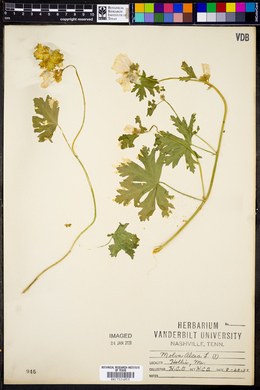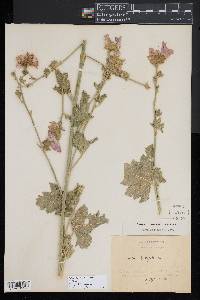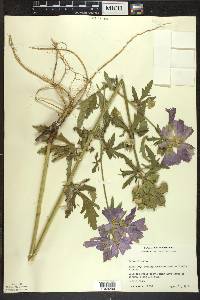Malva alcea
|
|
|
|
Family: Malvaceae
Vervain Mallow
|
Perennial herb 40 cm - 1 m tall Stem: erect, unbranched or with few branches, and thickly covered by star-shaped branching hairs. Leaves: alternate, stalked, somewhat circular in outline, but deeply palmately, five- to seven-lobed with largest lobes coarsely toothed above their middles (or very shallowly lobed in upper leaves). Flowers: many, axillary, long-stalked, showy, mostly bright pink (sometimes white to purple), 4 - 8 cm diameter, radially symmetric, with five partially spreading petals, and sepals immediately subtended by three oblong to egg-shaped, non-toothed, densely hairy bractlets (hairs branched in star pattern as well as unbranched). The flowers may be solitary in the upper leaf axils, or more crowded in terminal clusters. Sepals: five, but fused for up to half their length, then separating into five triangular to egg-shaped lobes. The calyx as a whole is densely covered with star-shaped branching hairs as well as some longer unbranched hairs. Petals: five, partially spreading, bright pink (though possibly white to purple), 2 - 3.5 cm long, heart-shaped or triangular with narrow base and broad outer edge with a wide, somewhat deep, central indentation. The central notch of the petal tip sometimes is so evident that the petals almost appear two-lobed at their tips. Stamens: numerous, but filaments fused into an elongate tube with the anthers protruding near the top. Pistil: enclosed by the stamen tube, with ten to twenty superior carpels (ovule-bearing structures), ten to twenty slender styles coming up through center of stamen tube, and ending with exserted, slender stigmas facing inward. Fruit: a ring of ten to twenty, one-seeded, hard, dark, often sparsely hairy (on outer edge), somewhat round to crescent-shaped, beakless, wedge-like segments (mericarps), each with a lengthwise ridge (keel) running down their outside. The mericarps typically separate from each other for dispersal, but they do not open to release the seed (indehiscent). The ring of fruit segments looks similar to a peeled tangerine or clementine fruit where the slices or wedges would be analogous to mericarps. Similar species: Malva alcea is very similar to M. moschata, but that species has more deeply and narrowly lobed leaf sections, its subsepal bractlets are much narrower and only hairy along their edges, the sepals mostly have long unbranched hairs on their outer surface, and the fruit segments (mericarps) have obvious, long, unbranched hairs along their edges. The other species of Malva in our area do not have deeply lobed leaves, and the petals are rarely longer than 2.5 cm. Flowering: June to September Habitat and ecology: Introduced from Europe, escaped from cultivation and mostly found along roadsides and in waste places. Occurence in the Chicago region: non-native Notes: The genus Malva is native only to the Old World (Asia, Europe, Africa). All species in North America were introduced and most were brought here for cultivation as ornamental garden plants. Etymology: Malva means Mallow. Alcea also means mallow. Author: The Field Museum Much like no. 1 [Malva moschata L.]; stem distinctly stellate-hairy; primary segments of the upper lvs merely shallowly lobed or coarsely toothed above the middle; bractlets oblong to ovate or obovate, densely stellate on the back, as also the cal; mature carpels glabrous or sparsely pubescent, keeled on the back; 2n=84. Native of Europe, occasionally escaped from cult., especially in ne. U.S. June-Sept. Gleason, Henry A. & Cronquist, Arthur J. 1991. Manual of vascular plants of northeastern United States and adjacent Canada. lxxv + 910 pp. ©The New York Botanical Garden. All rights reserved. Used by permission. From Flora of Indiana (1940) by Charles C. Deam Indiana Coefficient of Conservatism: C = null, non-native Wetland Indicator Status: N/A |

